Finding memories in a little corner of Japan
By Japanese standards, Okayama is a smallish city. With about 900,000 inhabitants, it is way behind such urban giants as Tokyo and Osaka. Yet, what it may lack in terms of size, it certainly makes up for in terms of cultural offerings. When I visited some years ago, I was pleasantly surprised to find that the city had many museums. Among these were the Perfectural Museum, the Art Museum, and the Oriental Museum. The first was dedicated to local history while the third displayed pieces from the Middle East. There was also a very charming canal, the banks of which were lined with sculpture.
By far, however, Okayama’s premier attraction was Koraku-en which, together with Kenroku-en in Kanazawa and Kairaku-en in Mito, was considered one of the three greatest gardens of Japan. Since it was my first visit to Okayama, I was resolved to experience this botanical marvel.
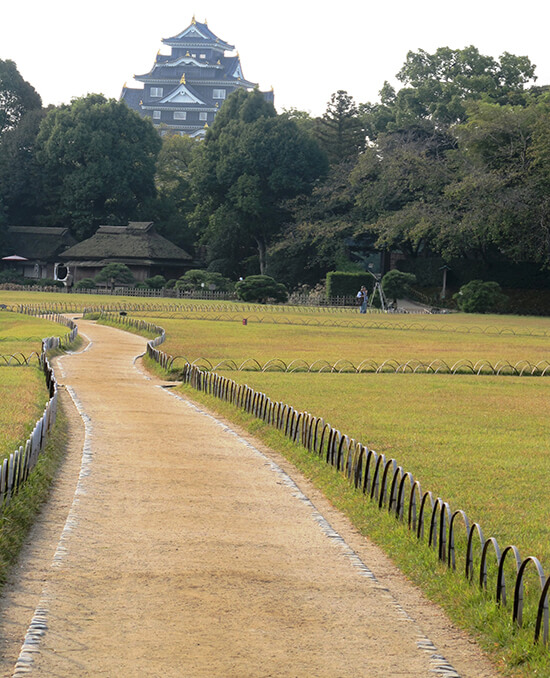
Entering through the main gate, going past the canopy of trees, one is suddenly at the edge of a vast clearing with sprawling lawns, a feature that is considered unique in Japanese gardens. In the distance, outlined as if by strokes of ink on paper, rose Okayama Castle, providing a “borrowed scenery” or scenery made up of elements located elsewhere—like distant mountains or, in this case, a tower which adds additional layers to one’s view.
Created in the Edo Period, Koraku-en is what is called a “strolling garden.” With its extravagant expanses of grass, large pools, vibrant colors, unusual plants, it was designed to impress guests who had been invited to large banquets. In contrast, in the earlier Muromachi Period, the trend was to cultivate smaller sanctuaries for meditation like the austere Zen gardens of Kyoto.
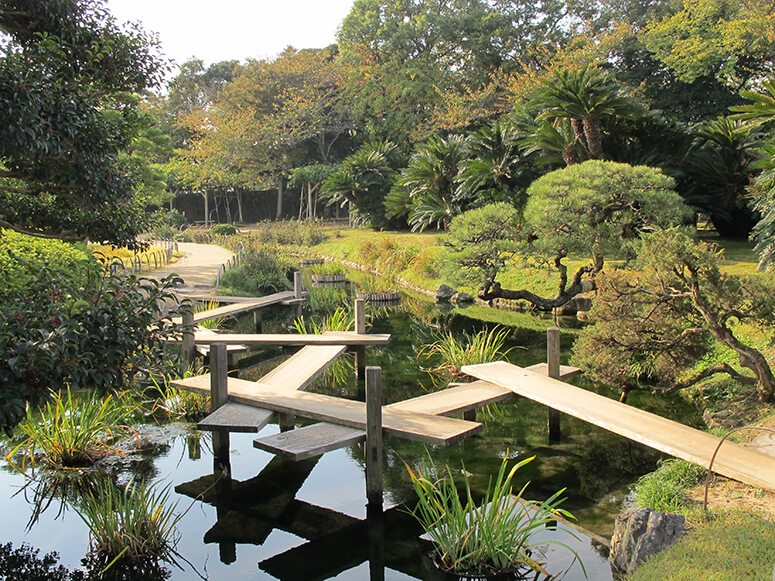
Wandering around the forested sections, I found many alluring sights. There were strange rock formations set in beds of moss.There were stepping stones across a stream, as well as groves of bamboo silent as cathedrals, and a crooked bridge with sharp angles that baffled evil spirits who, apparently, could only move in straight lines. This bridge—its spectral confounding properties aside—was very likely designed to entertain frolicking guests, with the more inebriated ones falling into the water because of a misstep on wildly skewed planks.
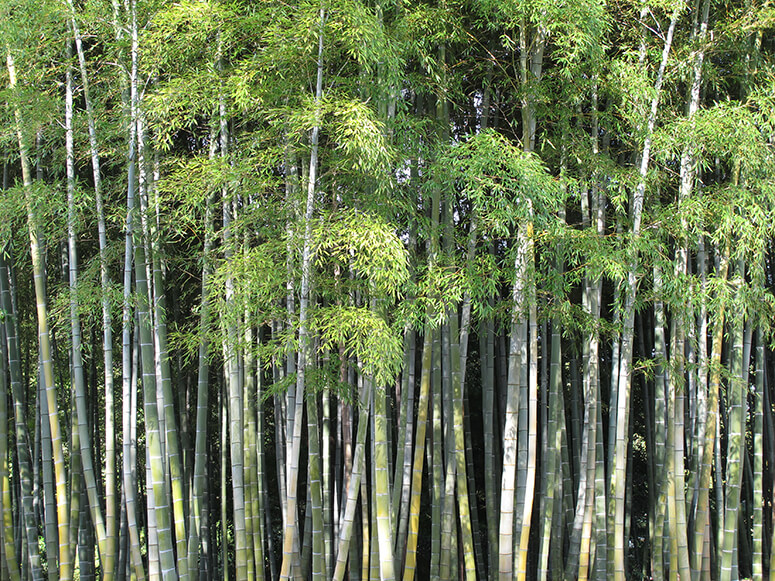
There was one structure that could, potentially, inspire a more contemplative activity. It was made of unpolished materials and housed two wooden benches between which ran a stream where a few rocks were partially submerged. At first, I thought that the whole setup was like a pavilion I had seen in the Forbidden City in Beijing. Like in Okayama, there was also a flowing stream. Revelers were supposed to throw a cup into the water and before it floated out of the pavilion, one had to be ready to recite a poem composed on the spot. While the stream in the Forbidden City had an extended, convoluted course, the one in the Koraku-en kiosk traveled a short distance. It just did not seem possible that even the most accomplished poet could fashion some lines in the time provided. Perhaps, after all that, the object of this rustic building was simply to allow one to meditate on the significance of water running around a few rocks.

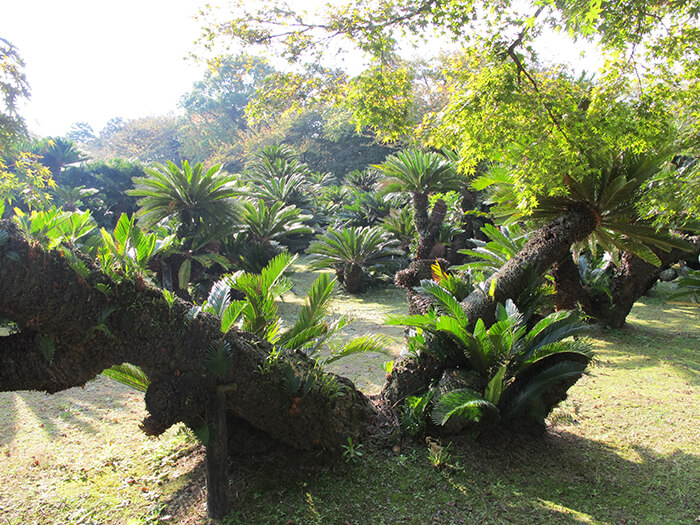
Back home in Manila, while examining a bunch of about 50 old photos taken when our parents brought my sisters and I to Japan way back in 1967, I found, to my surprise, pictures of me wandering around Okayama. So, I had been to this corner of Japan before when I was a young boy! I had just forgotten.
What I found even more amazing was that a number of the photos that were taken in 1967 matched the ones I took during a subsequent trip in 2012! There was a 1967 shot of Okayama’s ancient-looking tower that was identical with a 2012 photo: same framing, same composition, same angle. There was even a picture of the sweeping overview of the main clearing of Koraku-en from many decades ago that was photographed from the same vantage point as a more recent image. In the famous garden itself, we had a photo of a strange cycad grove from 1967, taken with our small camera, and 2012, taken by my cellphone.
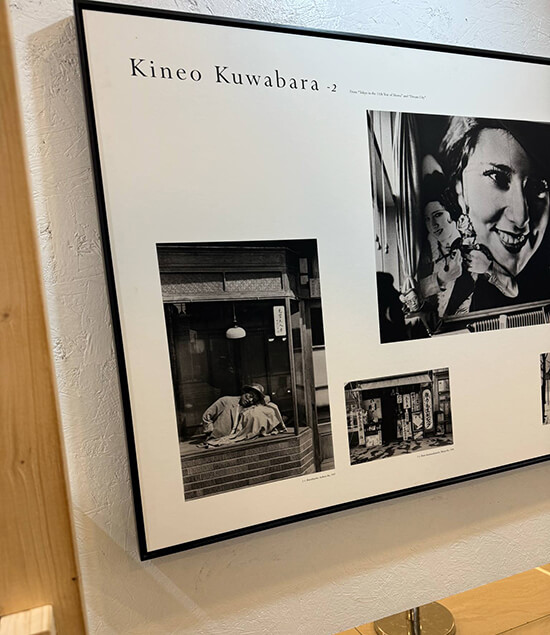
Since it was so long ago, I can no longer pinpoint who was responsible for each shot. My eldest sister probably took a lot of the pictures since she would have been able to handle a camera better and she was hardly in any of the photographs. But some photos could also have been by me since we probably took turns. Whoever it was, we could see that the scenes captured by the camera so long ago made an impression on my young mind and I would unknowingly replicate them many years later when I revisited Okayama. What I had then was a series of “Before and After” images that allowed me to compare the past and the present.
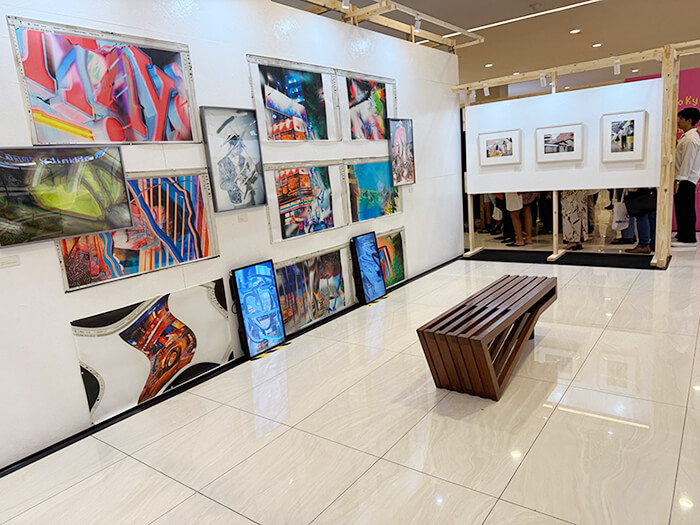
Interestingly, this comparative chronology is the theme of an exhibit at Estancia Mall by Japan Foundation, “Tokyo: Before/After.” Focused on the city of Tokyo, the show has this articulated aim: “Through comparing photographs from these…distinct periods, the past, present and future image of Tokyo emerges and reveals itself.”
Given the exhibit’s framework of Before and After, we see the important role of photography in documenting our lives. We also see the need to contemplate on what will be and what is now and what will become. Sometimes, as in the case of my Koraku-en pictures, it seems that what we cared about before will continue to fascinate us for a long time after.
* * *
The writer thanks Japanese Ambassador Endo Kazuya, Mrs Endo Akiko, and Japan Foundation director, Ben Suzuki.


